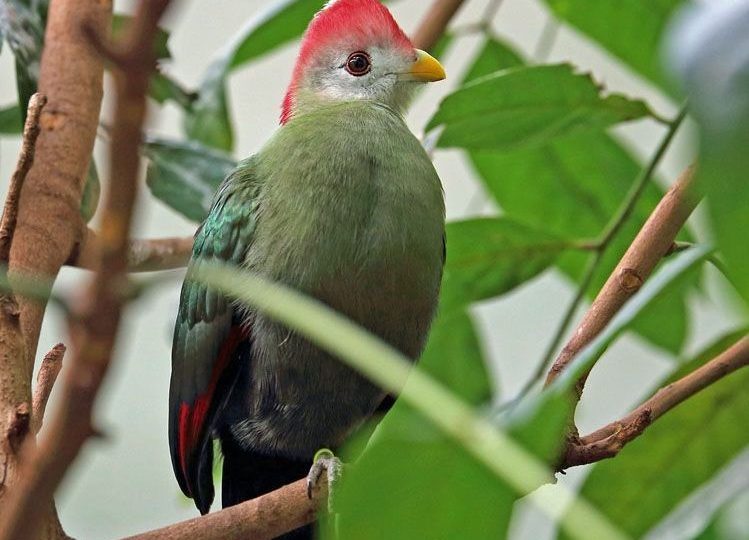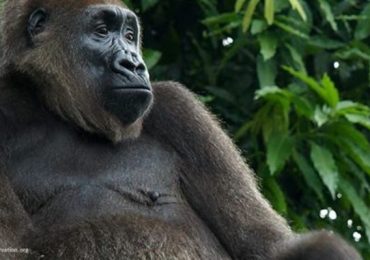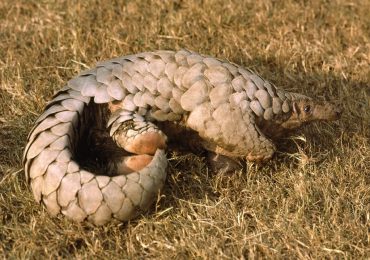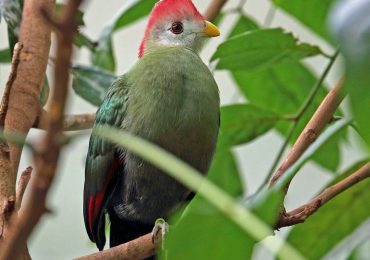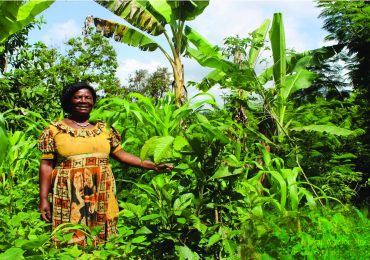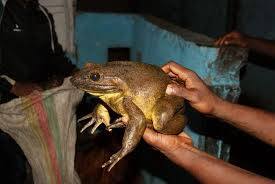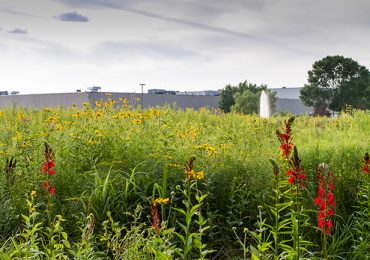The Bannerman’s turaco (Tauraco bannermani) is a species of bird in the Musophagidae family. This species is endemic to the Bamenda Highlands in Northwest Region of Cameroon. The Bannerman’s turaco was the last turaco species to be discovered, in 1923. The species has a high profile amongst environmental on nearby conservationists, with several organizations campaigning to ensure its survival.
Small populations of the Bannerman’s turaco have been recorded in Mt Mbam, Mt Bamboutos and at Fossimondi and Fomenji in the Southwest. They are known to inhabit subtropical or tropical moist mountain forests, between altitudes of 1,700m to 2,950m. They are strictly arboreal (spending the majority of their lives in trees), feeding on the fruits and sometimes on leaves, buds and flowers. The population is estimated to be just 1,500-7,000 mature individuals, mainly restricted to the Bamenda Highland forest, with another small share in the west and south west of the country. This turaco has a distinctive red crest, yellow bill and green, red, blue and yellow plumage. However, as it is almost exclusively arboreal (tree living); staying up in the canopy, the species is usually identified by its call which can be heard from as far as a kilometre away. Bannerman’s Turaco shares its genus with 13 other species that are collectively known as the ‘typical’ or green turacos.
These birds are unique in the avian world for actually producing green pigment. The green colouration of other bird species occurs due to the microscopic structure of the feathers. It spends its time foraging for fruit and berries in the canopies of the tropical montane forest of Cameroon. The Kilum-Ijim Forest in the Bamenda Highlands is one of the last remaining strongholds for the Bannerman’s Turaco. The greatest threat to the species in tits range habitat is habitat loss. Habitat loss in this area is mostly caused by agriculture, forest fires, logging and firewood collection and grazing of domestic animals. The species are also threatened with hunting because of its feathers which are of cultural value to the indigenous people. The Kilum-Ijim forest remain firm but forest losses still occur due to wildfires, collection of firewood, timber cutting for wood carvings, livestock grazing, and bee keeping. Population growth in villages surrounding the forest has doubled (at least) since the Kilum-Ijim Forest was established, leading to increased pressure on the forest for livelihoods and subsistence uses.
Advocating for change in these areas by raising awareness of locals and hunters on the dangers of hunting the Tauraco bannermani for its red feather, and educating them on the conservation needs will help curb the threats to the species and increases in chances of survival.


